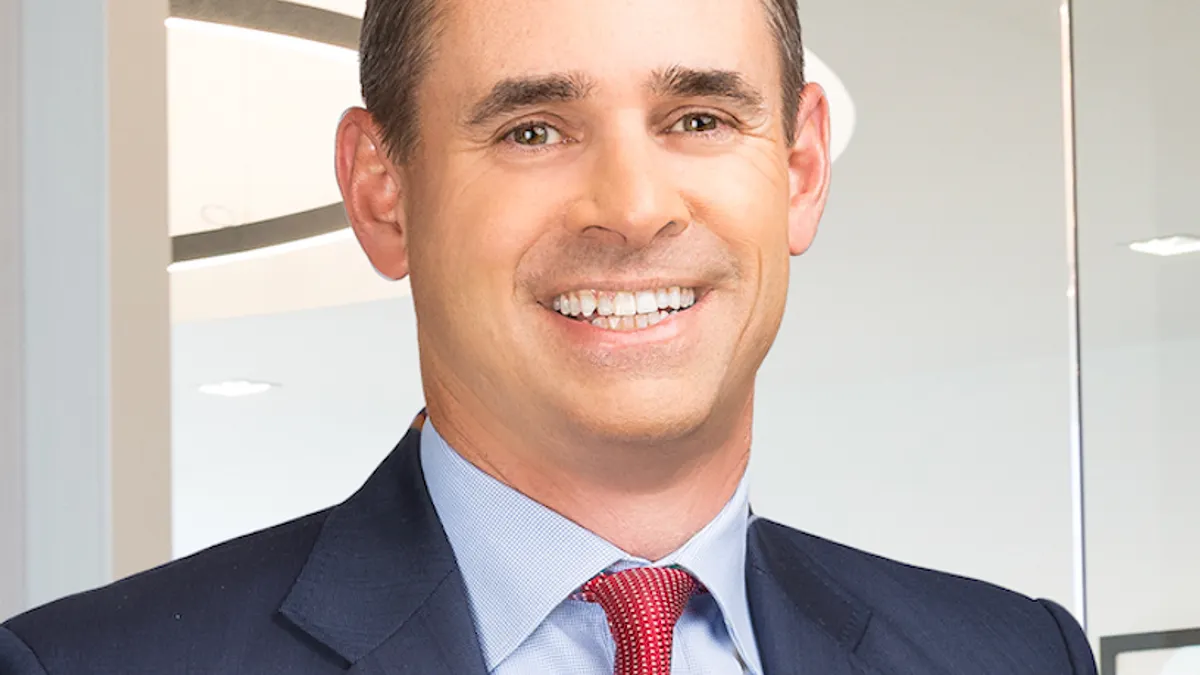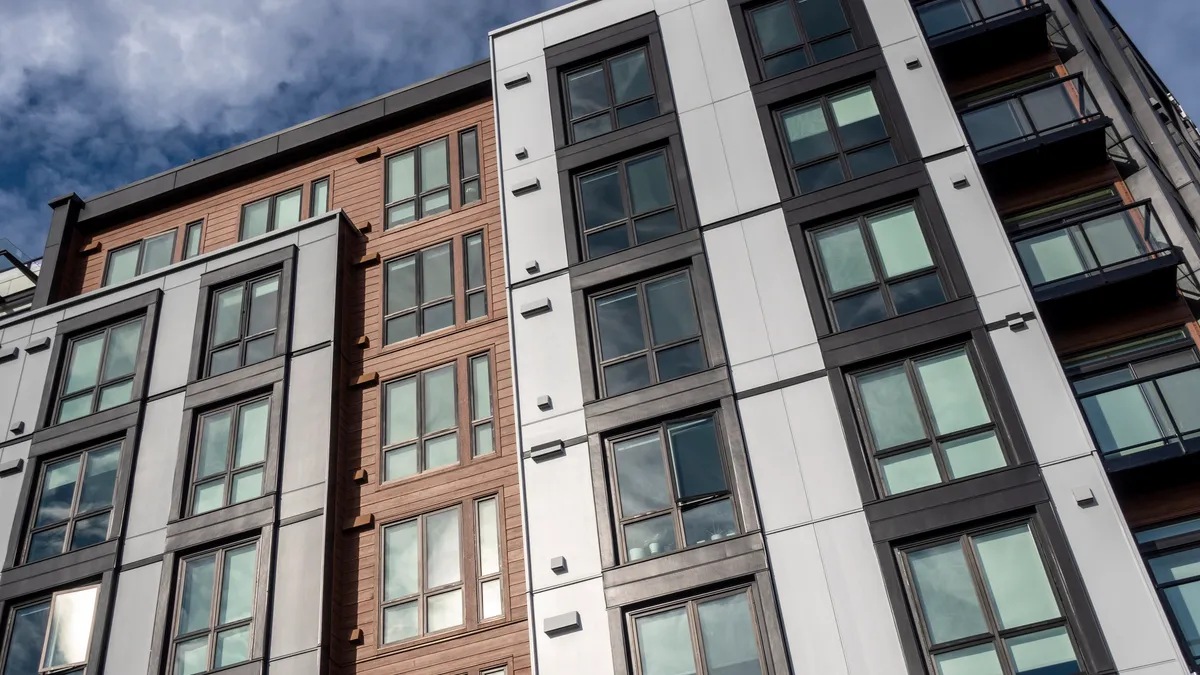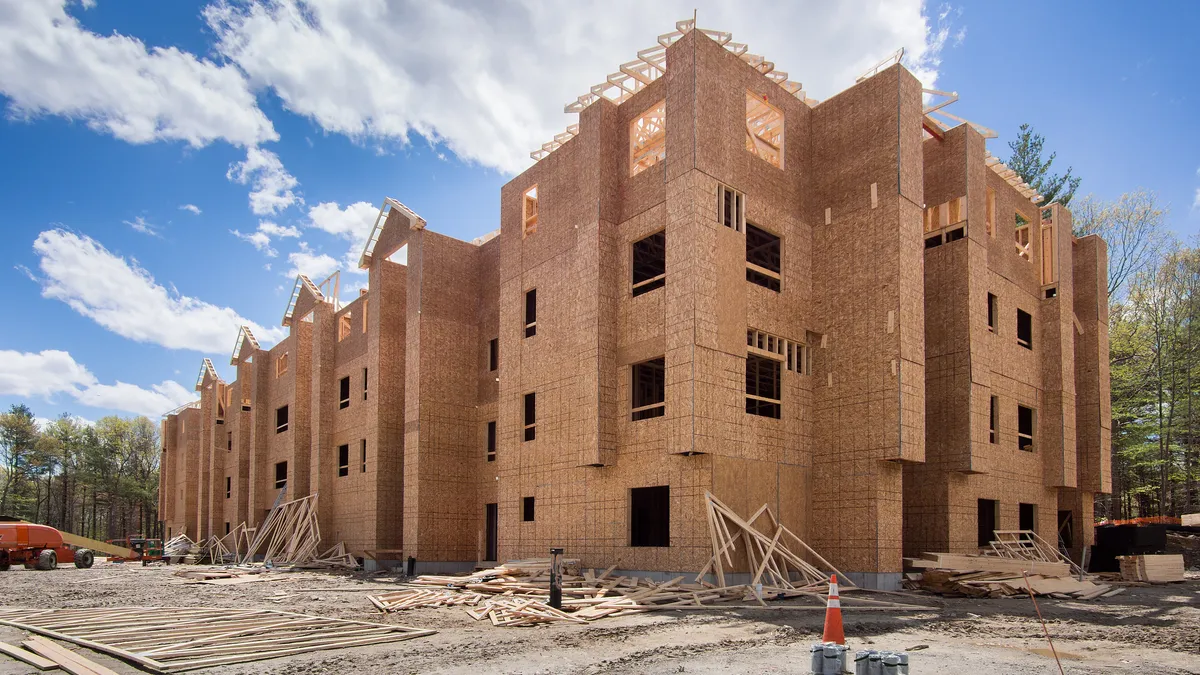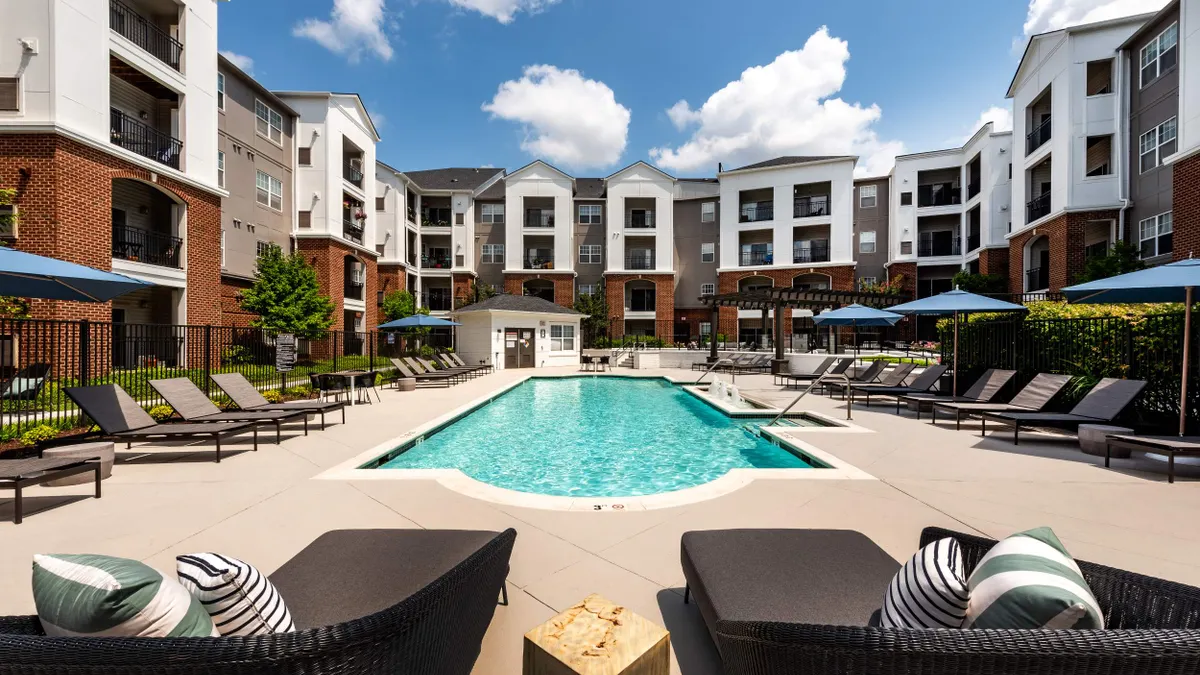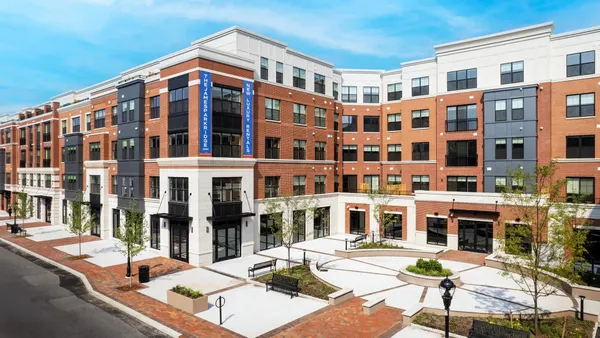In past construction downturns, debt was often a problem. Apartment developers had trouble finding lenders for new projects.
However, many developers say finding loans isn’t an issue as starts have plummeted in the past year. “The debt markets are still very liquid,” Greg Bonifield, founding partner at Charleston, South Carolina-based apartment developer Woodfield Development, told Multifamily Dive.
Bonifield said that traditional banks, life insurance companies and other institutional players are active. “You have seen numerous funds put together that are actively deploying debt, especially in the bridge loan area,” Bonifield said.
But, as the declining construction start numbers have shown, it takes more than the availability of debt to make a development deal work.
“It's been tough to make deals pencil, even for the last couple of years, just because of the increase in costs and interest rates,” said Cameron Gunter, executive chairman of Provo, Utah-based PEG, which owns, manages and develops apartments, hotels and build-to-rent properties. “This uncertainty on tariffs, especially from China, has caused us even bigger issues.”
With heavy supply still hitting some markets and existing properties available to purchase below replacement costs, many equity providers have shifted their focus away from development to acquisitions.
“There is still a lot of uncertainty,” said Chris Finlay, founder and CEO of Vienna, Virginia-based apartment owner, manager and developer Middleburg Communities. “Many investors and institutional capital sources are still trying to figure out if we have hit the bottom.”
Interest rate challenges
Even with debt available, borrowing costs are still a challenge. Construction loans are typically based on the Secured Overnight Financing Rate plus a basis point spread.
Since 2022, SOFR has risen significantly, mirroring upward movement in the federal funds rate.
“What everybody is worried about is interest rates and when they are going to lower the interest rates,” said Kimberly Byrum, managing principal of multifamily for Newport Beach, California-based advisory firm Zonda.
When combined with uncertainty around tariffs and construction costs, it's easy to see why developers are struggling.

“You can't make [a deal] pencil with what SOFR is and what your interest cost is,” Gunter said. “If we saw some stabilization or even a slight decline in construction costs from what we've seen over the last few years, that would make sense for us to move forward because we could start penciling a return that makes sense.”
Some developers remain hopeful that interest rate relief is on the horizon this year. But just last week Federal Reserve Chair Jerome Powell said the central bank is in no hurry to trim the main interest rate, resisting pressure from President Donald Trump for a reduction of as much as 3 percentage points, according to CFODive.
“We've been holding our breath now for quite some time,” said Rene Bello, founder and CEO of Miami-based real estate investment and development firm BLDG Ventures. “On the back end, call it Q3 or Q4, we should see some compression on those interest rates, which would free up a ton of capital in the capital market.”
Equity issues
Despite some improvement in the debt markets this year, equity continues to be an issue, though it's there for seasoned developers. “On the equity side, it's very selective,” said Bonifield, whose firm was No. 21 on the National Multifamily Housing Council’s most recent Top 25 developers list. “There absolutely is [limited partner] common equity available for new multifamily development.”
But that equity isn’t always easy to come by. “It is generally more available for very established development groups, but it's limited and strategic, and it's both domestic and foreign,” Bonifield said.

Equity also has certain preferences. In addition to working with seasonal developers, Bonifield said many investors want an iconic site that is going to open into a healthy rental environment. “They may be looking to own the deal long term and believe now is a great time to get something out of the ground,” he said.
In other cases, Bonifield sees equity chasing what he calls a basis play, looking at the cost per unit. “There are buckets of money out there that want to deploy into new construction if they can hit a certain basis per unit,” he said.
That may mean moving to less dense areas where land is typically cheaper. “On the basis play, the further you go out, you can build a product at a lower cost, which is what a fair amount of capital is focused on doing,” Bonifield said.
Shifting focus
Many equity groups are still fearful of investing in new projects when new deliveries are at highs not seen in years, though that should burn off by the time new developments have opened.
“There’s still a lot of discussion about supply, although I think that is overdone,” Finlay said. “But nonetheless, any uncertainty with the institutional guys is just more difficult, and that’s what we’re seeing today.”
Even firms that build and own are changing their strategy in this environment. PEG sees acquisitions as a better play in the face of uncertain construction costs.

“Without having a backlog of development deals we can move forward with, we've shifted to acquisitions,” Gunter said. “I can buy below replacement cost.”
Gunter said it will be difficult for developers to make the numbers work until costs stabilize or rents grow. While some deals may make sense, they’re few and far between.
“You've got to have some kind of incentive, whether it's city incentives or some density bonus,” Gunter said. “But they're going to require some affordability.”
Click here to sign up to receive multifamily and apartment news like this article in your inbox every weekday.







